

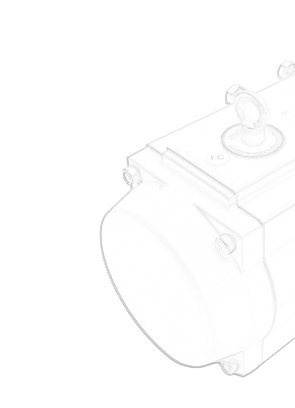
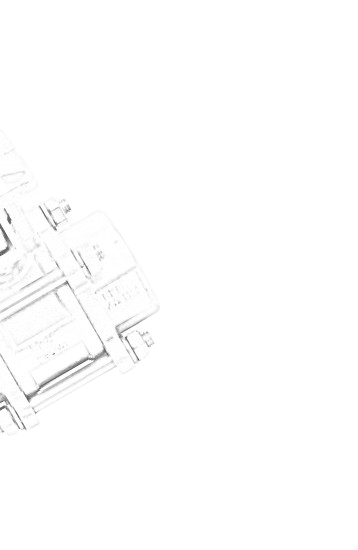
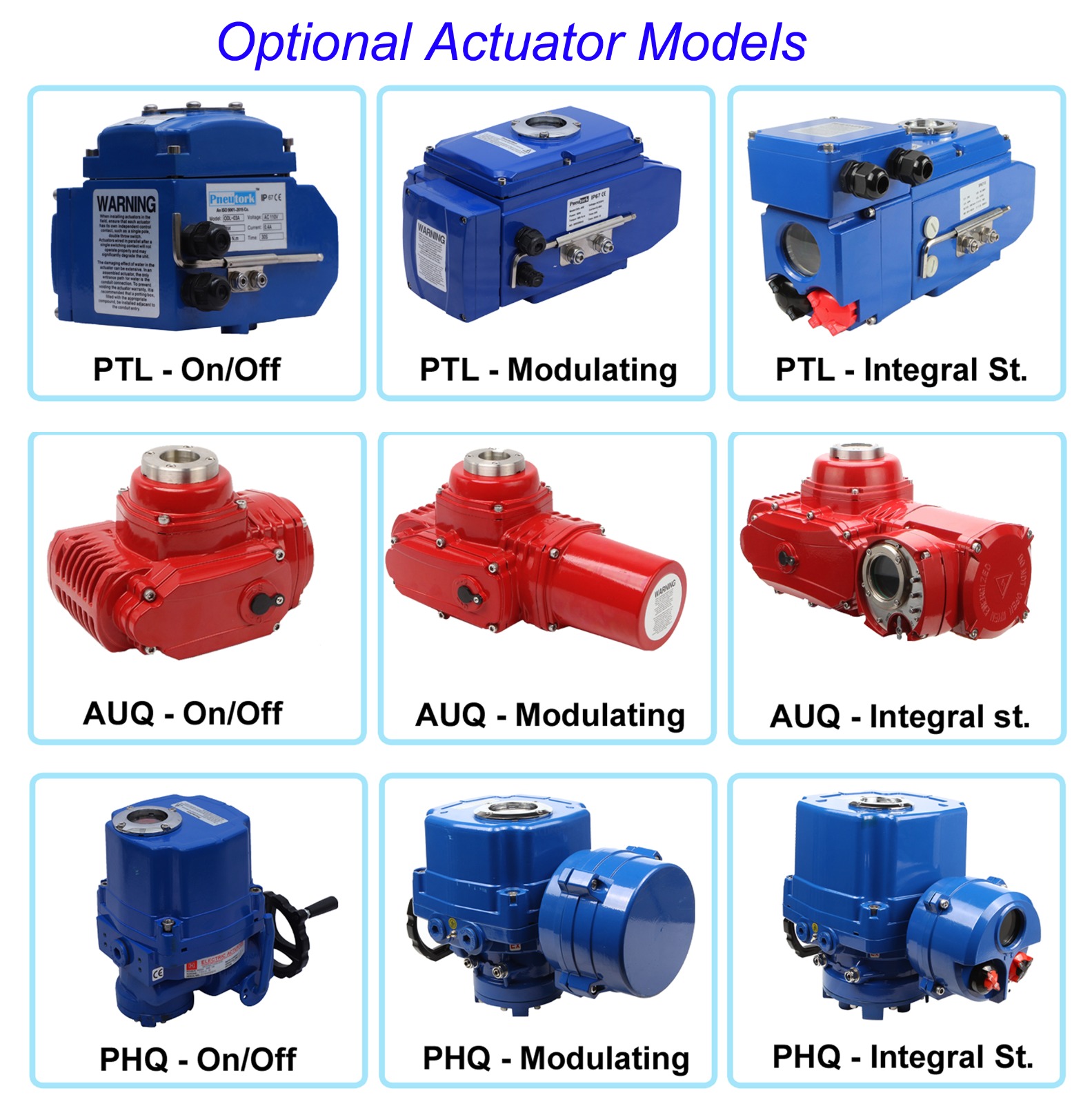

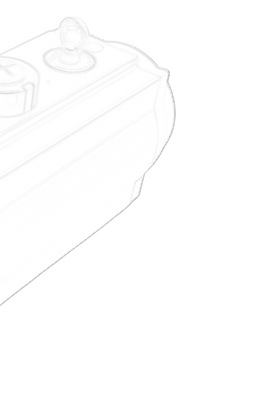
| Valve Type | Centric disc butterfly valve with PTFE lined body |
|---|---|
| Body Type | Shoft Wafer Type (sandwiched between flanges) two piece design |
| Seat Type | Teflon Sleeve |
| End Connection | Wafer Sandwiched |
| Pressure Rating | PN 10 / PN16 (On Request) |
| Oper. Temp. Range | -160ºC depending on MOC |
| Seat Leakage | Tight Shut off |
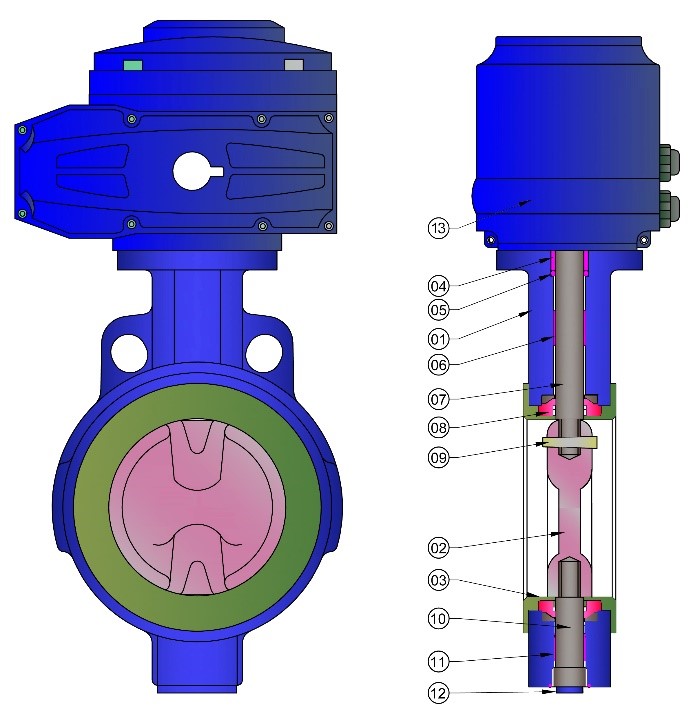
| No. | Description | Material |
|---|---|---|
| 1 | Body | CI/WCB/CF8/CF8M/DI |
| 2 | Disc | DI/SS 304 / SS 316 |
| 3 | Seat | PTFE |
| 4 | Collar | PTFE |
| 5 | “O” Ring | Viton |
| 6 | Metal Bush | PTFE Coated |
| 7 | Top Shaft | AISI 410 |
| 8 | Pad | Silicon |
| 9 | Disc Pin | S. S. 304 |
| 10 | Bottom Shaft | AISI 410 |
| 11 | “O” Ring | Viton |
| 12 | Plug | M.S. |
| 13 | Electric Actuator | Standard. |
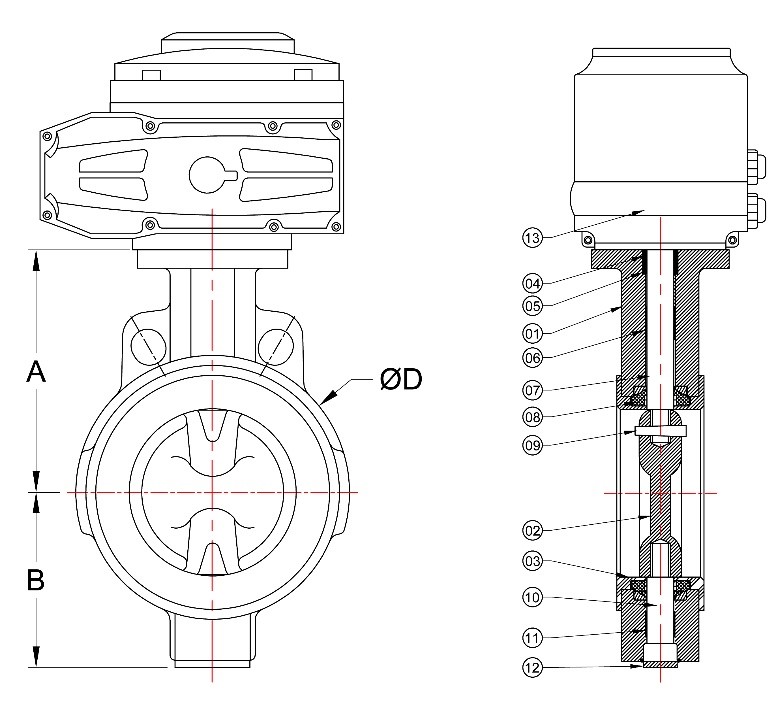
|
Valve Size
MM |
Inch | A | B | ØD |
|---|---|---|---|---|
| 40 | 1.1/2" | 55.5 | 81.5 | 33.5 |
| 50 | 2" | 60.5 | 100 | 43.5 |
| 65 | 2.1/2" | 68 | 107.5 | 46 |
| 80 | 3" | 75.5 | 115 | 46 |
| 100 | 4" | 85.5 | 125 | 52 |
| 125 | 5" | 108.5 | 167.5 | 56 |
| 150 | 6" | 121 | 180 | 56 |
| 200 | 8" | 146 | 205 | 60 |
| 250 | 10" | 221 | 271 | 68 |
| 300 | 12" | 252 | 296 | 78 |
| 350 | 14" | 271 | 312 | 78 |
| 400 | 16" | 300 | 365 | 102 |
| 450 | 18" | 332 | 368 | 90 |
| 500 | 20" | 377 | 420 | 90 |
Reach out for tailored solutions. Our team is ready to assist. Submit an inquiry and experience excellence in valve automation solutions.